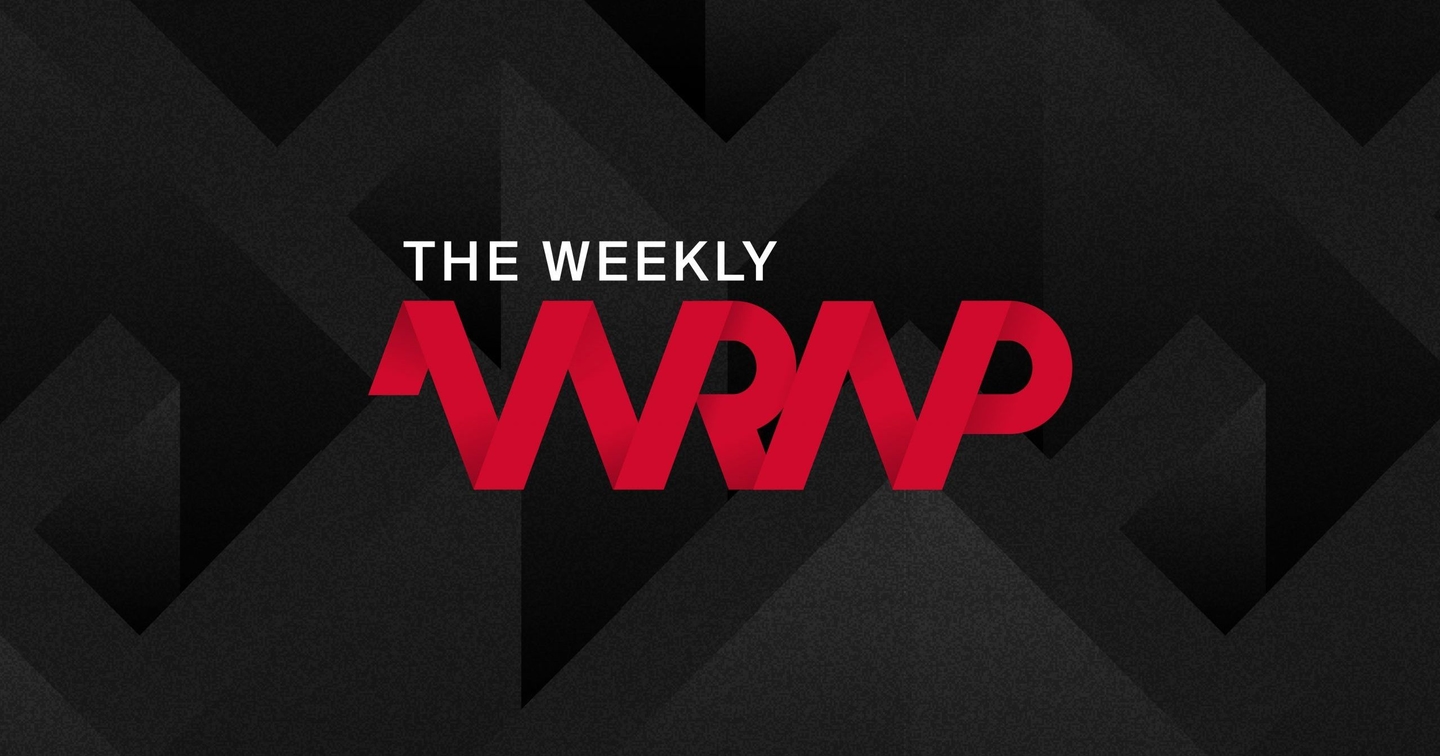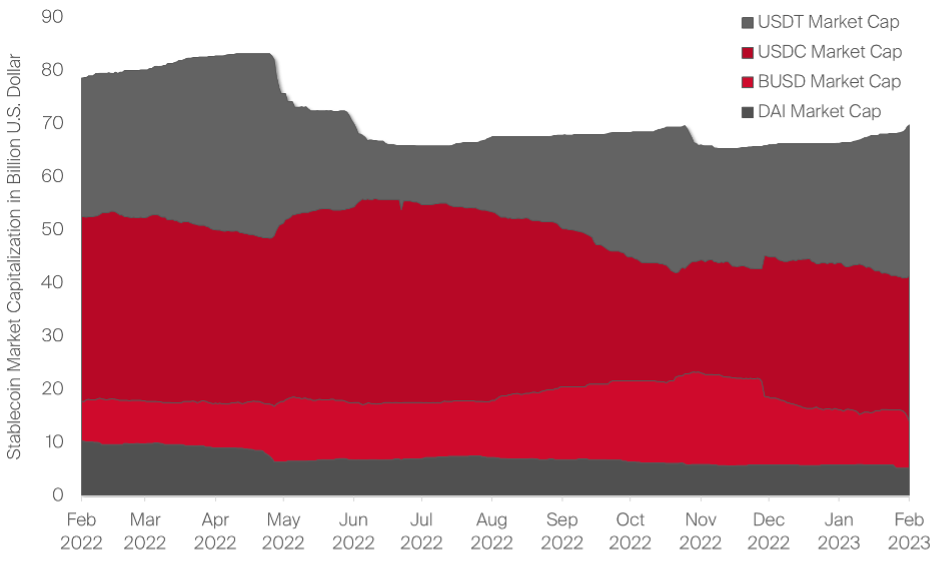
Paxos and Binance USD stablecoin, Celsius Restructuring Plan, Macro Update

1. Binance, Paxos and the BUSD stablecoin
The Facts:
- In the recent weeks, U.S. regulators have continued their crackdown on centralized U.S. Dollar stablecoin issuers, with Binance U.S. Dollar (BUSD) stablecoin issuer Paxos being ordered to seize minting (issuing) its BUSD stablecoin.
- As a consequence, more than 6% of the outstanding supply, $700 million in total, have been burned, i.e. redeemed and paid out in fiat currency, since, with the crypto community distancing itself from the centralized stablecoin.
- The users of DeFi lending protocol Aave voted to freeze all BUSD holdings due to the current situation, even though the pegging safety and stability in DeFi overall remained unaffected so far, because BUSD redemptions are processed in orderly fashion.
Our Take:
- Despite the harsh lash back that Paxos, Binance and their BUSD stablecoin faced, all redemptions were processed without delay, despite the bank run-like manner, while Paxos clarified, that BUSD will be eligible for redemption through February 2024.
- The headwinds for the BUSD come amidst recent news, that Binance comingled users funds in the past, while furthermore not having a full 1:1 backing at all times for its BUSD stablecoin, though the issues have been resolved recently.
- It remains questionable, as to why regulators only confront the stablecoin at a time that it is working in orderly fashion, whereas USDC stablecoin issuer Circle warned regulators last year already, of the then existing issues at its competitor.
- Furthermore the scrutiny surrounding stablecoins seems to be mainly due to governments’ and central banks’ efforts of pushing their own CBDCs, relating to the recent “Operation Chokepoint 2.0”.
- The first Operation Chokepoint started in 2013, with the goal of marginalizing and patronizing certain industries via pressure from the banking sector, with the current Operation Chokepoint 2.0 attempting to circumvent the developments and progression of the crypto industry, to push the CBDC narrative, while heavily U.S. centralized stablecoin issuer Circle, with backers such as BlackRock or Fidelity being out of focus.
- One might ask which the best stablecoin might be to hold at uncertain times like these; the answer is probably none of them at all, given the increased scrutiny and headwinds that stablecoins are currently facing, with even PayPal stopping its stablecoin program.
2. Celsius Network develops restructuring plan with asset manager NovaWulf
The Facts:
- Crypto lender Celsius filed for bankruptcy in summer last year, and customers funds have been locked up on the platform ever since, but now a resolution might be in sight after Celsius accepted asset manager NovaWulf´s bid for its remaining assets.
- The final bankruptcy resolving plan still requires approval from the responsible bankruptcy judge before coming into effect, allowing payouts to begin in summer, one year after the initial bankruptcy filing.
Our Take:
- Under the current recovery plan´s regime the chances for making investors whole as much as possible do not appear to be too bad, given the full extent of the scandal and de facto Ponzi scheme that Celsius has been running, as covered in the Weekly Wrap.
- Customers with holdings of less than $5’000 on the platform, representing more than 85% of all customers, will receive around 70% of their funds back in the form of BTC, ETH or USDC.
- Those customer with more than $5’000 on the Celsius platform, representing the remaining ~15% of customers, will receive the entire remainder of the funds, after small depositors have been paid back, with the remainder being paid in equity shares of the newly founded company.
- This implies that is is unknown, exactly how much large depositors will receive back, but they will be compensated in tokenized securities of the NewCo, the company founded and holding Celsius´ mining business and lending business, entitling them to profit sharing in the new business and its equity.
- This model for this type of tokenized equity/security has major similarities to the UNUS SED LEO token, that has been issued by Bitfinex after the exchange lost major holdings due to a hack in 2016, with the token allowing for future profit sharing, attempting to recover the funds of its users in the long run, based of future profits.
- Though it remains questionable whether the new company manages to recover all of Celsius´ missing funds, the model does seem more promising, as shown in the case of Bitfinex, while also providing a relatively timely, and “acceptable” resolution for the customers, given the extent of the scandal that has recently been uncovered.
- Overall, former depositors at crypto lender Celsius appear to be getting off with a slap on the wrist, relatively speaking, given the Ponzi it has been operating, and given that a resolution and payouts of funds are promised just one year after the initial bankruptcy, as most of those affected by the Mt. Gox Hack in 2014, are still waiting for their funds today.
3. Macro and Inflation Update
The Facts:
- The YoY U.S. CPI of January came down surprising low at 6.4%, exceeding the consensus estimate of 6.2% and 0.1% lower than previous month’s rise o 6.5%, as consumer prices on all fronts remained mainly unchained, though energy prices are rising further.
- Even the rather sticky core U.S. CPI, excluding food and energy, came in exceeding the consensus expectations as well, at 5.6% YoY in January, 0.1% lower than previous month’s YoY core CPI.
- MoM U.S. CPI in January came in at 0.5% (estimated at 0.5%), while core MoM U.S. CPI rose to 0.4% (also estimated at 0.4%) up 0.3% from December.
- Notably, the job market remains very unaffected, with jobless claims sustaining their previous level despite inflation cooling off.
- The FED Funds target rate now stands at 5.00% to 5.50 %, according to market expectations.
Why it’s important:
- Though inflation is still decreasing, the slowing of the decrease shows that is might still be a long road, before inflation is finally back under control, and real yields materialize.
- This has been reflected by the market expectations now even considering a terminal FED Funds rate of up to 6%, which has not been of any consideration in the past months at all.
- Furthermore, various economic indicators are currently weakening, and with the yield curve being inverted there is a high chance of a recession occurring in the future.
- Though this appears negative, from an investment standpoint economically tough times usually represent attractive times for entering long-term investment positions, while market prices are low, offering a skewed upside potential, with less remaining downside risk.
In other news
- DBS to offer crypto to HongKong clients (via Cointelegraph)
- Interactive Brokers offers crypto trading in HongKong (via Coindesk)
- Risks from El Salvador´s BTC adoption have not materialized says IMF (via TheBlock)
- El Salvador opens Bitcoin embassy in Texas (via Twitter)
- Polygon’s zkEVM planned for next month (via The Block)
Regulating securities is about disclosure, and all relevant information about a crypto is by its transparent nature already disclosed, so regulating them doesn’t change much.
Bryon Gilliam from Blockworks.
35.76%
- Loss in market dominance of the BUSD stablecoin out of the major four stablecoins (USDT, USDC, BUSD and DAI), with a current domination of 10.76%, compared to a prior 16.75% dominance.
Plotting chart of the week

“Curious what the year 2023 will look like? Read our 2023 Outlook, which has been published last week. (Subscribe the Outlook Updates to receive the copy straight to your inbox!)”
The latest episode of Decrypt titled “Status quo of NFTs – Part II” highlights the breakthrough of NFT markets after the 2021 wave and looks at adoption trends beyond art and collectibles.